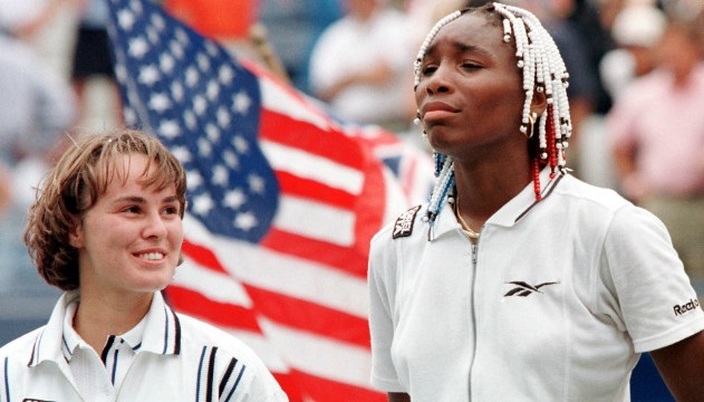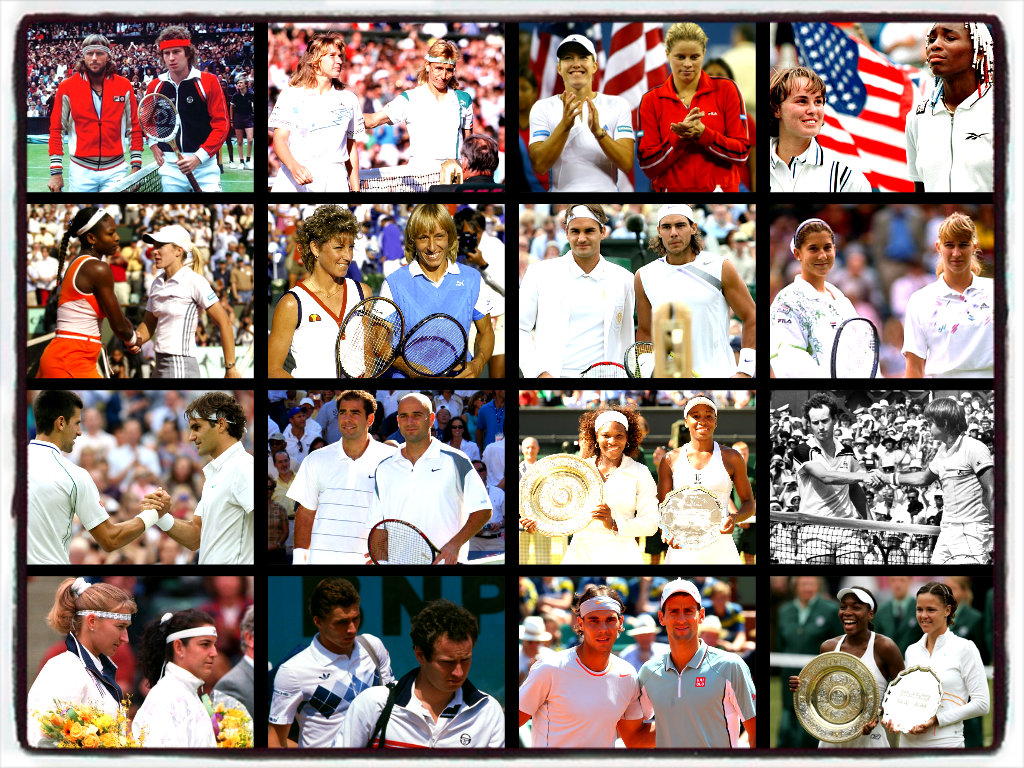|
Venus Williams and Martina Hingis are 33 years old. More than half their lifetimes have passed since they first burst onto the WTA Tour. So much has happened for both women since the mid-90s. Martina has retired twice from singles play, the second time in 2007 as she faced a drug suspension. She’s currently an active player on the doubles circuit, winning Miami this year partnering Sabine Lisicki. As for Venus, she hasn’t made a Grand Slam final since Wimbledon in 2009, and has had to reconstruct her career after being diagnosed with Sjogren’s Syndrome in 2011. Neither woman has been able to script the back ends of their careers as they would have imagined, but their accomplishments still secure very special places in the annals of tennis. Martina and Venus emerged during a time of transition for the WTA Tour. By 1997, Steffi Graf was mostly absent due to injury, and Monica Seles returned a fraction of the player she was prior to being stabbed in 1993. The hierarchy of women’s tennis was up for grabs, and the era of “big babe tennis” had yet to fully materialize. They were also part of a soon-to-be extinct breed of tennis prodigies; teenagers are no longer able to thrive at the highest level like these young women did. There was a window through which new talent could force their way to the forefront of women’s tennis. These two arrived at the right time, amidst the perfect storm, to form a brand new and scintillating rivalry on the WTA Tour. This rivalry was also complicated by race. Venus and Serena’s blackness was an affront to the tennis establishment and its fans. Their brash power game threatened all who preferred a more elegant femininity on court. Martina was the anti-Williams. She employed a deft touch and a knowledge of every inch of the tennis court to combat players who sought to blast her off the court. Her phenomenal success as a 16-year-old was a heralded resistance to the power game that threatened to overtake women’s tennis. That she was white only solidified her role as chief defender against a Williams invasion. It didn’t help that Martina did not shy away from talking about race and the Williams sisters. She famously opined that the sisters benefited from being black and that any slight they perceived, they could easily point to race as its cause. I don’t expect any 19-year-old to have a nuanced understanding of how race works in America, and so I won’t hold that against Martina, but her words furthered an already volatile situation in women’s tennis. I also believe that Martina knew what she was doing. She wanted to get inside Venus and Serena’s heads. She understood that if she could puppeteer the sisters mentally, she may benefit once she had to meet them on court. Another element of the rivalry that elevated it to must-see status was the vastly different worlds that Venus and Martina came from. Venus grew up in Compton, California with unconventional tennis parents. Richard Williams told anyone who would listen that his daughters would dominate the tennis world, and kept a level of mystery surrounding them by refusing to have them play on the junior circuit. Meanwhile, Martina was a known entity, winning the French Open Junior title at 12, and finishing 1994 ranked #87 as a 14-year-old. When Venus emerged at the 1997 U.S. Open, with noisy hair and Richard photographing her every move from the stands, nobody knew what to make of her. Venus’ blackness was difficult for a mostly white tennis audience to understand, and even harder for them to identify with. Martina dominated that 1997 U.S. Open final and much of the early going against Venus, winning 9 of 14 matches between 1997 and 1999. In her prime, Hingis enjoyed toying with her opponents; she knew she had superior skills and court intelligence to counter anything her opponents could muster. This dynamic was no different with Venus in their early matches. Even though Venus could out-hit her, Martina could count on all her intangibles to neutralize the booming serves and blistering groundstrokes. But, by the end of 1999, Venus seemed to be getting closer to solving the Hingis riddle. Although Venus had yet to beat Hingis at a Grand Slam, she was fresh off a 3-set tussle in the U.S. Open semis, and followed that up with a breathtaking win at the Grand Slam Cup. Below: Watch highlights of Venus' 3-set win at the 1999 Grand Slam Cup. For the remainder of their head-to-head, Venus led Hingis 5-2, including wins at Wimbledon and the U.S Open on her way to both titles in 2000. This period coincided with Venus’ peak, Martina’s struggles against the ever increasing power game, and a slew of injuries that would eventually force her first retirement from the game in February 2003. When she returned to the tour in 2006, the two split a pair of meetings before Martina disappeared once more. Of their 21 meetings, 10 were decided in three sets. Their respective styles complemented each other so well, but their rivalry was more than that: they both had such confidence in themselves and wanted to win so badly, those emotions (more often than not) spilled over into their tennis.
I’d love for Martina to give singles another go just so this rivalry could get a third renewal; there seemed to be so much unfinished business between the two on court. The majority of their matches occurred during their precocious teens/early twenties when both were prone to drama rather than keeping a level head. I often wonder what the two could muster against each other in the twilight of their tennis years, as more mature and evolved versions of the players we first met. With Hingis’ successful return to the doubles circuit this year in Miami, perhaps we will have get one more high stakes battle, in a doubles final with Martina against both sisters. Even though Venus and Martina’s rivalry feels like it was way too brief, the two electrified tennis during a distinct period in the history of the WTA. However short their rivalry, their contributions to the sport loom large. This is the fourth in a series on great tennis rivalries: Pistol Pete & The A-Train: American Tennis Royalty Steffi & Monica: Ill-Fated Rivalry & Story of What Might Have Been The Sisters Williams: Beyond Tennis Rivalry
0 Comments
Leave a Reply. |
ARCHIVES
September 2022
|


 RSS Feed
RSS Feed